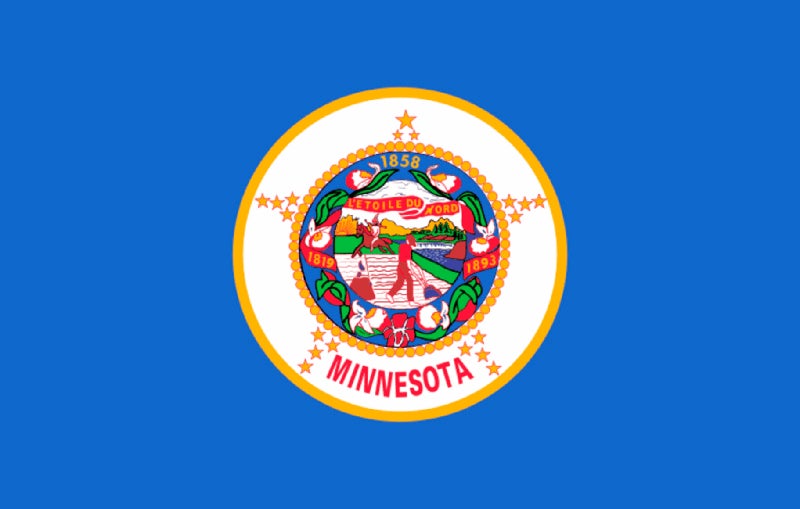Ideas ready to fly as panel embarks on remaking Minnesota’s state flag
Published 4:26 pm Wednesday, August 2, 2023
|
Getting your Trinity Audio player ready...
|
By Brian Bakst, Minnesota Public Radio News
The task: Redesign Minnesota’s flag and the state emblem that appears on government documents, buildings and other places.
The decisionmakers: 13 appointed commission members with diverse backgrounds, experience and ideas to work alongside four state legislators who won’t have voting power at this stage.
The timeline: tight, with an end-of-year deadline to make a decision.
Minnesota’s State Emblems Redesign Commission is almost set and will begin its process soon. The final commission selections were due this week, with the initial picks eager to get going.
“I can’t tell you how excited I was when I got the call to be part of this,” said Anita Talsma Gaul, a community college history instructor from southwestern Minnesota. “I thought, ‘Wow, what a chance to be part of history.’”
Luis Fitch, a Minneapolis-based design and branding expert who moved to Minnesota from Mexico 25 years ago, said he’s had his sights on a flag rework since attending a presentation by the director of the Smithsonian Latino Center during a visit here, which began with a slide depicting the current flag.
“I hadn’t ever paid attention. And I was like in shock to hear his point of view in having a person with a rifle working the land and then a Native American in the back half-naked and a horse in the distance and the story that tells or communicates,” Fitch said, recalling how he fired off emails soon after to begin pressing for a replacement. “I got involved right away when I saw there was an opening.”
Gaul is one of three appointees of Gov. Tim Walz; Fitch is the designee of the Minnesota Council on Latino Affairs.
Other members will represent the Council for Minnesotans of African Heritage, the Council on Asian-Pacific Minnesotans, the Dakota Community and the Ojibwe Community. Seats will also be held by representatives of the Capitol Area Architectural and Planning Board, the Minnesota State Arts Board, the Explore Minnesota Tourism council, the Minnesota Historical Society and the Secretary of State’s Office.
David Kelliher, who is coordinating the commission’s work on behalf of the Historical Society, said no date has been set for the initial meeting. That will be called by an appointee of the governor. The commission will be subject to Minnesota’s Open Meeting law, meaning its deliberations will be presumed to be in public; it is required to solicit public suggestions and feedback.
Walz’s picks also included Shelley Buck, vice president of the Prairie Island Indian Community, and Michael Harralson, a deputy judge at the Leech Lake Band of Ojibwe.
“While flags are just flags, I believe that symbols and names are important means for communicating who we are as a community,” Harralson wrote in an online post. “The image on the Minnesota flag and seal is beyond in need of change and I’m thankful to be a part of this historic process. I look forward to working with my fellow commissioners and engaging the people of Minnesota to develop a symbol of which we can be proud to fly.”
The other appointees also have strong feelings about what should go into the new state symbols.
“My personal preference would be to keep it simple. I think our current flag is a little too busy, too many words and these tiny little images. It’s hard to see,” Gaul said. “It should be simple. And I would like to see something that in a sense is unique so that when you look at it, you’re immediately like, yep, that’s Minnesota’s flag.”
Simplicity is a priority for Fitch, too.
“I will ask a kindergarten kid to draw the flag of Minnesota. If you can’t do it, then there’s something wrong. That’s my philosophy,” Fitch said. “Right now, a kid cannot draw it. Matter of fact, an adult cannot draw the flag. It is complex, it’s full of symbolism and historical things that I think we got to review all that.”
Both Fitch and Gaul said recognizable and representative symbols, colors and presentation will factor into the mix. And they both are pleased at the diversity of membership on the commission.
“That is only going to help us do a better job of designing a flag and a symbol, a state seal that everyone can embrace,” Gaul said.
The panel has until Jan. 1 to submit its report with the new designs. Under the law that established the commission, the chosen designs would take effect on May 11 — Statehood Day — unless the Legislature votes before then to overturn them.





